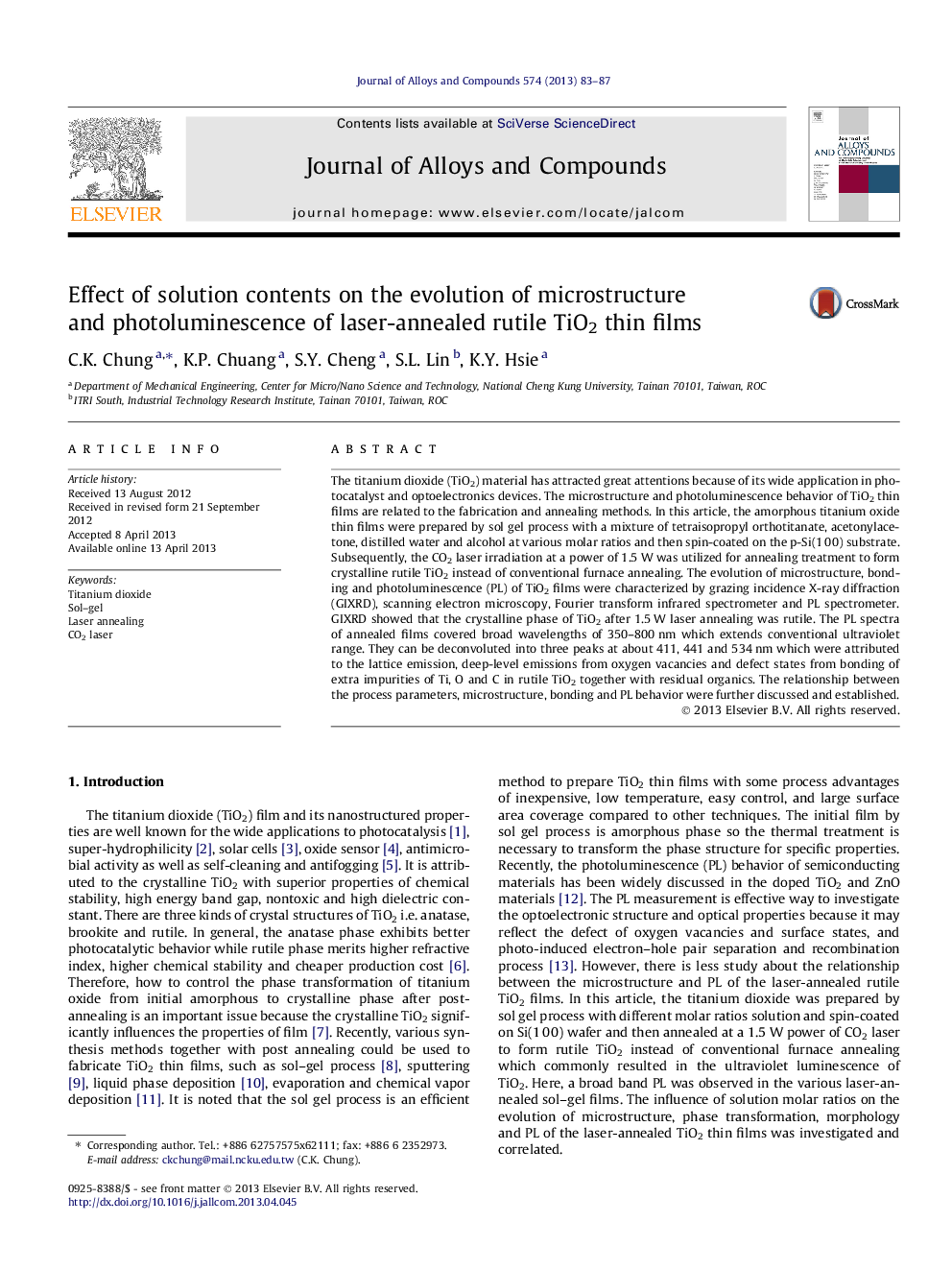| کد مقاله | کد نشریه | سال انتشار | مقاله انگلیسی | نسخه تمام متن |
|---|---|---|---|---|
| 1613549 | 1516319 | 2013 | 5 صفحه PDF | دانلود رایگان |

• The titanium dioxide (TiO2) material has attracted great attentions to wide applications.
• The microstructure and photoluminescence (PL) of TiO2 are related to annealing methods.
• The laser-annealed rutile TiO2 films were prepared using various sol gel solutions.
• The tetraisopropyl orthotitanate content is the primary factor affecting rutile formation.
• The PL emission of our rutile TiO2 can be extended from ultraviolet to visible range due to residual organics.
The titanium dioxide (TiO2) material has attracted great attentions because of its wide application in photocatalyst and optoelectronics devices. The microstructure and photoluminescence behavior of TiO2 thin films are related to the fabrication and annealing methods. In this article, the amorphous titanium oxide thin films were prepared by sol gel process with a mixture of tetraisopropyl orthotitanate, acetonylacetone, distilled water and alcohol at various molar ratios and then spin-coated on the p-Si(1 0 0) substrate. Subsequently, the CO2 laser irradiation at a power of 1.5 W was utilized for annealing treatment to form crystalline rutile TiO2 instead of conventional furnace annealing. The evolution of microstructure, bonding and photoluminescence (PL) of TiO2 films were characterized by grazing incidence X-ray diffraction (GIXRD), scanning electron microscopy, Fourier transform infrared spectrometer and PL spectrometer. GIXRD showed that the crystalline phase of TiO2 after 1.5 W laser annealing was rutile. The PL spectra of annealed films covered broad wavelengths of 350–800 nm which extends conventional ultraviolet range. They can be deconvoluted into three peaks at about 411, 441 and 534 nm which were attributed to the lattice emission, deep-level emissions from oxygen vacancies and defect states from bonding of extra impurities of Ti, O and C in rutile TiO2 together with residual organics. The relationship between the process parameters, microstructure, bonding and PL behavior were further discussed and established.
Journal: Journal of Alloys and Compounds - Volume 574, 15 October 2013, Pages 83–87